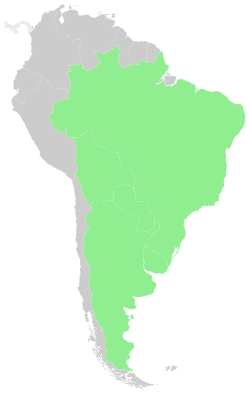| Senecio brasiliensis | |
|---|---|
 | |
| Flor-das-almas growing in Rio Grande do Sul | |
| Scientific classification | |
| Kingdom: | Plantae |
| Clade: | Tracheophytes |
| Clade: | Angiosperms |
| Clade: | Eudicots |
| Clade: | Asterids |
| Order: | Asterales |
| Family: | Asteraceae |
| Genus: | Senecio |
| Species: | S. brasiliensis |
| Binomial name | |
| Senecio brasiliensis | |
 | |
| Native range of S. brasiliensis | |
| Synonyms | |
Cineraria brasiliensisSpreng. [1] Contents | |
Senecio brasiliensis, known by the common name flor-das-almas [1] (flower-of-souls), is a perennial species of the family Asteraceae. It is native to fields and meadows of central South America.
